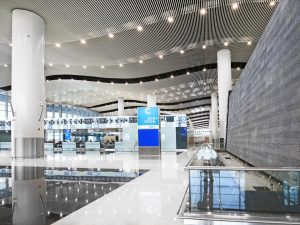The global aviation industry will be heading to Riyadh in the first week of November to explore the untapped growth potential of the airport industry in the Kingdom, which is in the midst of massive expansion in line with the Saudi 2030 Vision, a unique transformative economic and social reform blueprint unveiled in April 2016. As the largest country on the Arabian Peninsula pushes massively to expand and upgrade airport facilities to serve 330 million air travelers by 2030, the year when 60 per cent of its population will be under the age of 35, Saudi Arabia’s aviation strategy includes the expansion of existing airports and a focus on two large mega hubs in Riyadh and Jeddah, as well as plans to set up a new national carrier. Earlier this year, the Kingdom relaunched the privatization of its airports to support the diversification of its oil-dominated economy and ownership of 29 airports has already been moved to a new entity to prepare them for the process. The Middle East’s largest aviation market will see the fastest passenger traffic growth in the Middle East until 2040 and has unveiled plans for a US$147 billion expansion of its transport sector. In May 2022, Saudi Arabia unveiled a Harmonizing Air Travel policy that will fuel Vision 2030 and help generate around US$100 billion in aviation sector investment by the end of the decade. The National Aviation Sector Strategy aims to increase air connectivity to 250 destinations, reaching 330 million passengers, and double air cargo capacity to 4.5 million tonnes. The Kingdom also has plans to launch a new national airline to complement its existing national carriers, Saudia, Flynas and Flyadeal. It will also …
Read More »
Breaking News
- Delano opens in Bluewaters Island, Dubai with 251 rooms and 84 suites
- flynas celebrates its first direct flight between Jeddah and Djibouti
- Deluxe Mirage travel and tourism company wins ‘fastest growing travel management company – KSA’ at Arabian Travel Awards
- Middle East recorded strongest international arrivals with 95 million: UN Tourism
- Dubai records 437 successful bids for global business events in 2024
- Abu Dhabi Investment Office to host inaugural Shoptalk Luxe event for innovation in luxury retail
- VFS Global’s new Indonesia e-Visa on Arrival official platform goes live for 97 nationalities, including UAE, KSA, Qatar, Kuwait and Oman
- Travelport wins ‘Best travel technology provider’ at the Arabian Travel Awards 2024
- Department of Culture and Tourism partners with ne’ma to reduce food waste in tourism and hospitality sector
- Emirates boosts Madagascar flights to meet robust travel demand
- Riyadh Air signs a strategic agreement with Catrion to deliver world class culinary experiences
 Tourism Breaking News
Tourism Breaking News
